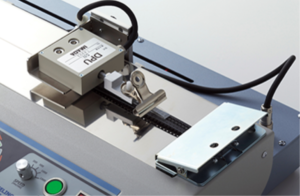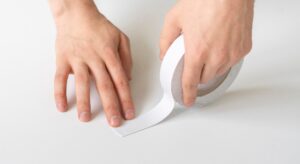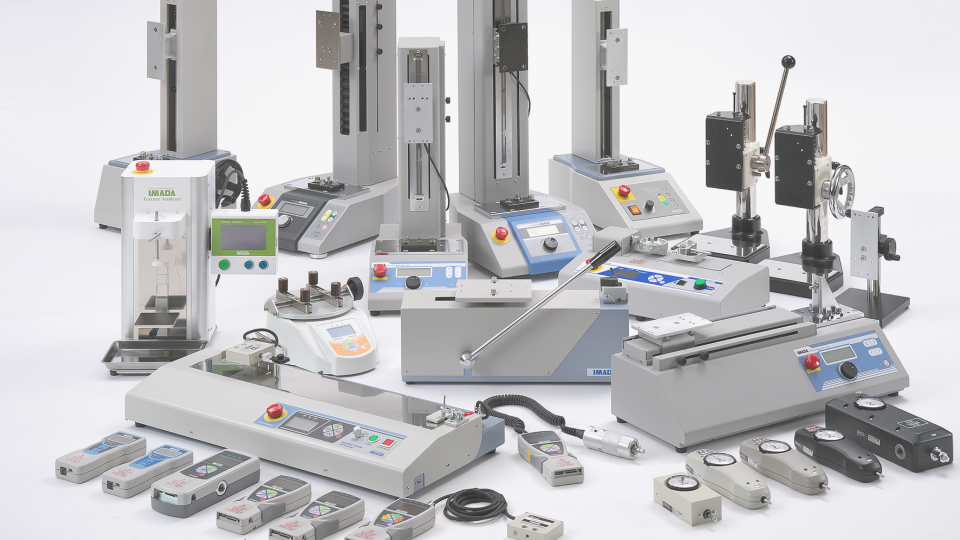
Peel Test: Methods for Paint Coating Adhesion
The last of the Peel Test Series, followed by the 45-degree and the T Peel Tests, is the coatings adhesion tests, known as the Cross-cut and the Pull-off methods. The peel tests for the finish coating system assessment.
>> Introduction to Peel Tests: 180 Degree Peel Test / 90 Degree Peel Test”
>> Introduction to Peel Tests: 45 Degree Peel Test / T Peel Test”
Paint coatings have various functions, mainly for surface protection, aesthetics, and imparting. Evaluating whether the functions meet the required quality and purpose is important. But if the coating is easily removed, it cannot fulfill its role. Therefore, the adhesion evaluation is essential, and these tests introduced are standard among manufacturers and users in the coatings industry.
Adhesion Test: Cross-cut method
First, the Cross-cut method, which has been popular in the industry for many years. The method with three simple steps: (1) make a grid cut on a coated sample surface, (2) paste adhesive tape over the grid cut area of the sample, and the adhesive tape is peeled off, (3) check the condition of the coated film.
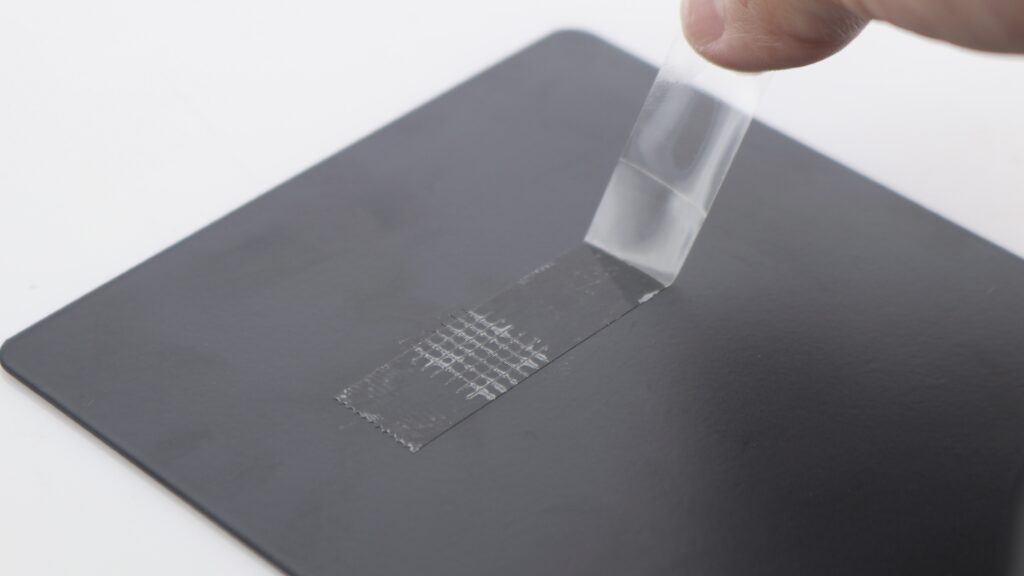
The Cross-cut method is generally used to compare the coated films after classifying them according to the state condition of the coated film after tape removal. The Cross-cut method can be implemented on-site in various situations with simple processes.
On the other hand, the test results are affected by factors other than adhesion, JIS K5600-5-6:1999 (Testing methods for paints− Part 5: Mechanical property of film− Section 6: Adhesion test (Cross-cut Test))states that the Cross-cut method should not be considered as a means of measuring adhesion.
“The Cross-cut method”
– The method is used to evaluate the condition of the coating film using the adhesive tape peeling process.
– The test can be proceeded on-site, and results are used for the coating film assessments.
– According to the results, classified and comparative evaluations are made.
– JIS K5600-5-6:1999 states the test shall not be regarded as a means of measuring adhesion.
Adhesion test: Pull-off method
Next is the Pull-off method. The Pull-off method, similar to the Cross-cut method, is also a test method for evaluating paint coating adhesion.JIS K5600-5-6:1999 specifies the standard of the peel test method for evaluating adhesion, JIS K5600-5-7:1999 (Testing methods for paints-Part 5: Mechanical property of film- Section 7: Adhesion test (Pull -off method)).
In the Pull-off method, the force required for peeling the coating off is measured with a jig adhered to the coating film and pulled vertically with a force-measuring instrument. It is possible to quantitatively evaluate the coating film adhesion values by measuring the peeling force.
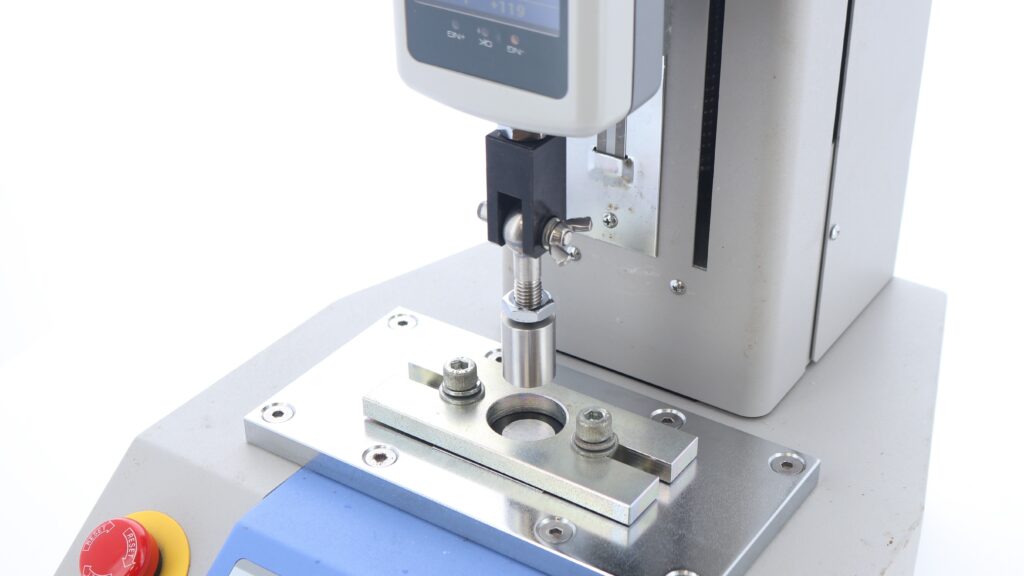
Although the performance of the measuring instrument and adhesive affects the results, the Pull-off method enables measuring the peel force (adhesion) in the low to high load range, and the minute differences in peel forces and the coating level can be compared to the Cross-cut method.
For example, in the Cross-cut method, if the condition of the coating film of two test samples after the test is visually equivalent, the adhesion is evaluated as equal. In contrast, in the Pull-off method, the peel force generated during the test is expressed numerically, allowing for comparison of adhesion.
On the other hand, the Pull-off method is not suitable for measurement at the coating site due to (1) the need for measuring equipment and stands and (2) the lack of ease of measurement and is used in conjunction with the Cross-cut method depending on the situation.
“The Pull-off method”
– The jig is attached to the adhesive film and pulled by a force measuring instrument to measure the peeling forces.
– The peeling force is quantified, eliminating subjectivity and allowing for value and data evaluation.
– Compared to the Cross-cut method, a more comprehensive force range is tested, enabling the evaluation of minute differences in peel force.
– The measuring instruments and a test stand is required. And a new test cylinder or adhesive removal is required for proceeding with each test.
Click here for the actual measurement of the Pull-off method.
Summary
In this article, we introduced the Cross-cut method and the Pull-off method as test methods used for the adhesion evaluation of paints and coatings; these test methods have different advantages, and it is essential to identify the tests most appropriate according to the requirements.
Thank you for following Introduction to Peel Tests. We hope the information provided helps you to understand some of the basics of the Peel Tests. There are other related videos introduced in IMADA’s website. Please refer to the Force-Channel for more Force Measurements and solution articles.
*Click here for more Peel Test videos


